Home> Bearing Technology> Pillow Block Care and Maintenance Guide: Best Practices for Longevity
Introduction
Overview of Pillow Blocks and Their Role in Machinery
Pillow blocks, also known as plummer blocks, are crucial components in machinery, providing support and housing for rotating shafts. These bearings are widely used across various industries to support heavy loads and facilitate smooth motion in equipment such as conveyor systems, agricultural machinery, and industrial processing equipment.
Importance of Proper Care and Maintenance for Longevity
Proper care and maintenance of pillow blocks are essential to ensure their longevity and optimal performance. Regular maintenance not only extends the service life of pillow block bearings but also prevents costly breakdowns and downtime in industrial operations. Neglecting maintenance can lead to premature wear, increased friction, and potential failures, compromising overall machinery efficiency and safety.
Providing Best Practices for Maintaining Pillow Blocks
The purpose of this guide is to outline the best practices and techniques for effectively maintaining pillow blocks. By following these recommendations, machinery operators and maintenance personnel can enhance the reliability, durability, and efficiency of pillow block bearings, thereby maximizing the operational lifespan of industrial equipment.
Understanding Pillow Blocks
Explanation of What Pillow Blocks Are and Their Components
Pillow blocks are essential components in machinery and equipment, designed to support rotating shafts and provide housing for bearings. They are also known as plummer blocks due to their housing design resembling a pillow with a base and mounting holes for attachment to a foundation or machine frame. Pillow blocks consist of several key components:
Key Components:
Housing: The main body that holds the bearing and provides support.
Bearing: The component that supports the shaft and allows for smooth rotation.
Grease Fitting: Allows for lubrication to reduce friction and wear.
Seal: Prevents contaminants from entering the bearing and maintains lubrication.
5. Mounting Bolts: Secure the pillow block to the machine or mounting surface.
Pillow blocks come in various designs and sizes to accommodate different shaft diameters and load capacities, making them versatile for a wide range of applications.
Common Materials Used in Pillow Blocks
Pillow blocks are typically made from durable materials that can withstand heavy loads and harsh operating conditions. Common materials include:
Materials:
Cast Iron: Known for its strength and durability, making it suitable for heavy-duty applications.
Steel: Provides high strength and resistance to corrosion.
Stainless Steel: Offers corrosion resistance in demanding environments.
Plastic: Provides lightweight options with good corrosion resistance for specific applications.
The choice of material depends on factors such as load capacity, environmental conditions, and cost-effectiveness.
Typical Applications and Industries Using Pillow Blocks
Pillow blocks are widely used across various industries where rotating shafts require support and alignment. Common applications include:
Applications:
Conveyor Systems: Used to support conveyor belt shafts in material handling operations.
Industrial Machinery: Support shafts in manufacturing equipment such as pumps, compressors, and fans.
Agricultural Equipment: Used in farm machinery for supporting shafts in tillers, harvesters, and irrigation systems.
Mining Equipment: Supports shafts in crushers, screens, and conveyors in mining operations.
5. Construction Machinery: Used in equipment like concrete mixers and cranes to support shafts and provide stability.
Industries:
Manufacturing: Automotive, aerospace, food processing, and textile industries.
Mining and Quarrying: Extraction and processing of minerals and aggregates.
Utilities: Power generation, water treatment, and wastewater management.
Pillow blocks play a critical role in maintaining operational efficiency and reducing downtime in industrial applications.
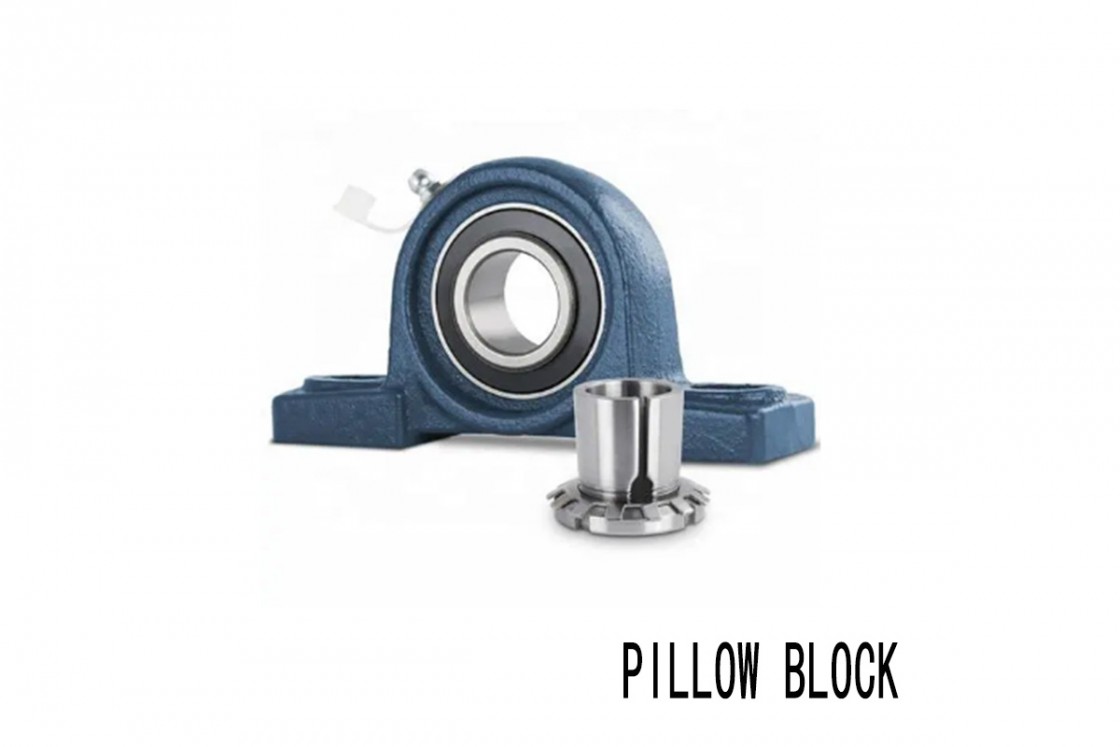
Installation Best Practices
Step-by-Step Guide to Installing Pillow Blocks Correctly
Installing pillow blocks correctly is crucial to ensure optimal performance and longevity. Follow these steps for proper installation:
|
Step |
Procedure |
Key Actions |
|
Preparation |
Inspect Components |
Check pillow block, bearing, and shaft for damage or defects. |
|
Prepare Work Area |
Ensure a clean, well-lit workspace with necessary tools ready. |
|
|
Mounting Surface Preparation |
Clean and Level |
Thoroughly clean mounting surface to remove dirt and ensure it is flat and level. |
|
Positioning |
Place pillow block on mounting surface, aligning it with the shaft's intended direction. |
|
|
Lubrication |
Apply Grease |
Apply recommended grease to bearing and inner race of pillow block, ensuring even distribution. |
|
Shaft Insertion |
Insert Shaft |
Carefully insert shaft into the bearing of the pillow block, checking for smooth movement. |
|
Securing the Pillow Block |
Fasten Bolts |
Securely fasten mounting bolts to recommended torque specifications using a torque wrench. |
|
Alignment and Adjustment |
Check Alignment |
Verify shaft alignment with straight edge or laser alignment tool. |
|
Make Adjustments |
Adjust pillow block position if needed to achieve proper alignment. |
|
Common Installation Mistakes to Avoid
Improper Lubrication
Issue: Insufficient or excessive grease application can lead to premature bearing failure.
Solution: Follow manufacturer guidelines for lubrication quantity and frequency.
Incorrect Mounting Surface
Issue: Uneven or dirty mounting surfaces can cause misalignment and vibration.
Solution: Clean and level the mounting surface before installation.
Over-Tightening Bolts
Issue: Over-tightening bolts can deform the pillow block, causing stress on the bearing.
Solution: Use a torque wrench to tighten bolts to specified torque values.
Tools and Equipment Needed for Installation
Essential Tools:
Torque Wrench: Ensures bolts are tightened to recommended specifications.
Grease Gun: For applying grease to the bearing.
Level: Ensures mounting surface is flat and level.
Cleaning Supplies: To clean mounting surfaces and components.
Proper installation of pillow blocks ensures reliable performance, reduces downtime, and extends equipment life. Following these best practices can help maintain optimal functioning of pillow block bearings in various industrial applications.
Regular Inspection and Maintenance
Importance of Regular Inspections
Regular inspection and maintenance are crucial for maximizing the longevity and performance of pillow block bearings. By conducting regular inspections, potential issues can be identified early, preventing costly repairs and downtime. Key reasons for regular inspections include:
Preventative Maintenance: Proactively addressing issues before they escalate can extend the lifespan of pillow block bearings.
Safety: Ensuring that pillow blocks are in optimal condition reduces the risk of equipment failure and workplace accidents.
Cost Savings: Early detection of problems allows for timely repairs, reducing overall maintenance costs.
Checklist for Routine Inspections
Visual Inspection:
Examine Exterior: Check for any signs of leaks, rust, or physical damage on the pillow block housing.
Inspect Seals: Ensure seals are intact and functioning properly to prevent contamination.
Bearing Condition:
Check Temperature: Monitor the operating temperature of the pillow block bearings during operation.
Listen for Noise: Listen for unusual noises or vibrations that could indicate bearing wear.
Lubrication:
Verify Lubrication: Confirm that the pillow block bearings are adequately lubricated according to manufacturer specifications.
Inspect Grease Condition: Check the condition of the grease for contamination or degradation.
Identifying Signs of Wear and Tear
Common Signs:
Increased Friction: Noticeable increase in friction during operation.
Vibration or Noise: Unusual vibration or noise from the pillow block assembly.
Heat Build-Up: Excessive heat around the pillow block housing.
Wear Patterns:
Abrasive Particles: Presence of abrasive particles in the lubricant or around the bearing area.
Irregular Wear: Uneven wear patterns on the bearing surfaces.
Remedial Actions:
Replace Damaged Parts: Promptly replace worn-out or damaged pillow block components.
Realign or Adjust: Realign the shaft or adjust the pillow block assembly to correct any misalignment.
Regular inspections and maintenance practices should be documented and scheduled based on the operating conditions and manufacturer recommendations. Implementing a proactive maintenance approach ensures reliable performance and extends the operational life of pillow block bearings.
|
Brand |
Overview |
Key Features |
Market Presence |
|
FAG |
FAG, a German brand, renowned for precision and reliability in bearing solutions. |
High-quality materials, advanced sealing technology, wide range of sizes and configurations. |
Globally recognized, trusted in industrial and automotive sectors. |
|
SKF |
SKF, a global leader, offers extensive pillow block options with focus on durability. |
Innovative bearing designs, excellent load capacity, integrated lubrication systems. |
Widely used across industries, known for high-performance and longevity. |
|
NSK |
NSK, Japanese multinational, excels in precision engineering and reliability. |
High-speed capability, noise reduction features, customized solutions available. |
Strong presence in automotive and industrial applications, valued for technological advancements. |
|
NTN |
NTN, Japan-based, offers a broad range of pillow block bearings for diverse applications. |
Robust construction, effective sealing mechanisms, options for extreme conditions. |
Globally recognized in heavy industries, known for durable and efficient bearing solutions. |
|
Timken |
Timken, USA-based, known for robust pillow block bearings suitable for tough environments. |
Heavy-duty designs, tapered roller bearings, corrosion-resistant options. |
Trusted in mining, construction, and agricultural sectors for reliability under harsh conditions. |
|
Schaeffler |
Schaeffler Group, German brand, emphasizes innovation and performance in bearings. |
Integrated sensor technology, lightweight designs, eco-friendly materials. |
Leading supplier in automotive and aerospace industries, preferred for advanced engineering solutions. |
|
Rexnord |
Rexnord, USA-based, specializes in high-performance bearings for industrial applications. |
Modular designs, customizable options, low-maintenance solutions. |
Strong foothold in manufacturing and process industries, recognized for efficiency and reliability. |
|
Dodge (ABB) |
Dodge (part of ABB), offers comprehensive solutions with a focus on industrial automation. |
Smart sensor technology, energy-efficient designs, easy installation features. |
Well-established in automation and heavy industries, known for integrating smart technologies into bearing solutions. |
Lubrication Techniques
Proper lubrication is crucial for ensuring the longevity and optimal performance of pillow block bearings. This section explores the importance of lubrication, the types of lubricants suitable for pillow blocks, the correct application methods, and the recommended frequency of lubrication based on usage and environmental conditions.
Importance of Proper Lubrication for Pillow Blocks
Pillow block bearings, being essential components in machinery, require adequate lubrication to minimize friction, reduce wear and tear, and prevent premature failure. Lubrication forms a protective layer between moving parts, enhancing efficiency and extending the bearing's lifespan.
Types of Lubricants Suitable for Pillow Blocks
Choosing the right lubricant depends on factors such as operating temperatures, load conditions, and environmental exposure. Common lubricants include:
Grease: Ideal for applications with low to moderate speeds and intermittent operation. Grease maintains its consistency, adheres well to surfaces, and provides effective lubrication over extended periods.
Oil: Suitable for high-speed applications and environments requiring cooling or flushing properties. Oil lubrication offers better heat dissipation and can be more efficient in reducing friction.
How to Correctly Apply Lubricants
Proper application of lubricants ensures uniform coverage and effective protection of pillow block bearings. Follow these steps for optimal lubrication:
Cleanliness: Ensure the bearing housing and shaft are clean and free of dirt or contaminants before lubrication.
Quantity: Apply the recommended amount of lubricant as per manufacturer specifications. Over-lubrication can lead to overheating and premature failure, while under-lubrication causes increased friction and wear.
Method: Depending on the type of lubricant, use a grease gun, oiler, or automated lubrication system for precise and controlled application.
Distribution: Rotate the shaft or manually distribute the lubricant to ensure it reaches all bearing surfaces uniformly.
Frequency of Lubrication Based on Usage and Environment
The frequency of lubrication varies depending on factors such as operating conditions, load, speed, and environmental factors. Generally, pillow block bearings should be lubricated:
Regularly: Follow a scheduled maintenance plan recommended by the manufacturer.
Periodically: Monitor bearing performance and environmental conditions to adjust lubrication intervals as necessary.
Condition-Based: Implement predictive maintenance strategies to assess lubricant condition and bearing performance.
Conclusion
Proper lubrication practices are essential for maximizing the reliability and longevity of pillow block bearings. By understanding the importance of lubrication, selecting the appropriate lubricants, applying them correctly, and maintaining a consistent lubrication schedule, operators can ensure optimal performance and minimize downtime in industrial applications.
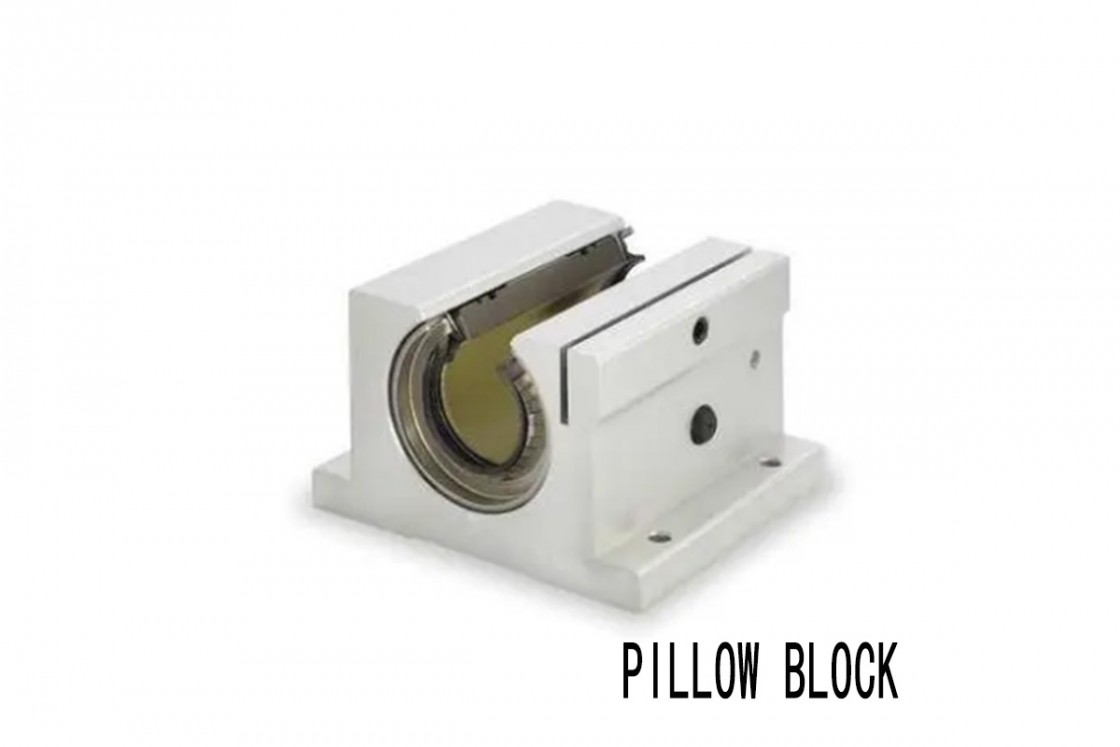
Cleaning and Upkeep
Pillow block bearings require regular cleaning and upkeep to ensure optimal performance and longevity. This section explores the best practices for cleaning, safe cleaning agents and methods, and measures to prevent contamination and corrosion.
Best Practices for Cleaning Pillow Blocks
Pillow block bearings play a critical role in various industrial applications, and proper cleaning is essential for maintaining their efficiency and extending their lifespan. Follow these best practices:
Inspect Regularly: Conduct visual inspections to identify dirt, debris, or signs of wear on pillow blocks. Regular inspections help detect issues early before they escalate.
Use Compressed Air: Start cleaning by using compressed air to blow away loose particles and dirt from the exterior of the pillow block housing and surrounding areas.
Remove Grease and Contaminants: Use suitable cleaning agents or solvents to remove old grease, dirt, and contaminants from the bearing and shaft surfaces. Ensure the solvent used is compatible with the bearing material and does not cause damage.
Clean Bearing Housing: Clean the inside of the bearing housing thoroughly to remove any accumulated debris or moisture that could affect bearing performance.
5. Inspect Seals: Check the condition of seals and gaskets to ensure they are intact and functioning properly. Replace damaged seals promptly to prevent ingress of contaminants.
Safe Cleaning Agents and Methods to Use
When selecting cleaning agents and methods for pillow block bearings, prioritize safety and compatibility with bearing materials. Recommended cleaning agents include:
Mild Detergents: Use mild detergents diluted with water for general cleaning of pillow block housings and external surfaces.
Solvents: Choose solvents that are suitable for removing grease and contaminants without harming bearing components. Examples include isopropyl alcohol or specific bearing cleaners recommended by manufacturers.
Compressed Air: Use compressed air for initial cleaning to remove loose particles before applying cleaning agents.
Preventing Contamination and Corrosion
Preventive measures are crucial to protect pillow blocks from contamination and corrosion, ensuring prolonged service life:
Storage: Store pillow block bearings in a clean, dry environment away from moisture and dust. Use protective covers or packaging to shield bearings from contaminants during storage.
Seal Maintenance: Regularly inspect and maintain seals to prevent ingress of dirt, moisture, and corrosive substances that could degrade bearing performance.
Lubrication: Apply appropriate lubricants after cleaning to ensure smooth operation and reduce friction between moving parts. Lubricants also help to displace moisture and protect against corrosion.
Conclusion
By adhering to these best practices for cleaning and upkeep, operators can enhance the reliability and longevity of pillow block bearings in industrial applications. Regular maintenance and proper cleaning procedures mitigate the risks of contamination, corrosion, and premature failure, ensuring continuous operational efficiency.
Troubleshooting Common Issues
Pillow block bearings are integral components in various industrial applications, ensuring smooth operation of rotating machinery. This section focuses on identifying and resolving common issues encountered with pillow block bearings, including misalignment, noise, overheating, unusual wear patterns, and when to seek professional assistance.
Identifying and Fixing Common Pillow Block Problems
Pillow block bearings, crucial for the functionality of rotating equipment, may encounter several common issues that affect performance:
Misalignment: Misalignment occurs when the shaft and bearing are not properly aligned, leading to increased friction, vibration, and premature wear. Use alignment tools to ensure the shaft is correctly positioned within the bearing housing.
Solution: Adjust the mounting position of the pillow block or realign the shaft to eliminate misalignment. Ensure proper installation torque and use shims if necessary.
Noise: Unusual noises such as grinding, squealing, or clicking may indicate issues with lubrication, bearing damage, or misalignment.
Solution: Inspect the bearing for signs of wear or damage. Check lubrication levels and quality. Replace worn-out bearings or apply appropriate lubricants to reduce noise.
Overheating: Overheating can result from excessive friction due to inadequate lubrication, misalignment, or overloading.
Solution: Monitor operating temperatures regularly. Ensure sufficient lubrication and check for blockages that restrict airflow around the pillow block housing. Address any underlying causes promptly to prevent overheating.
Solutions for Unusual Wear Patterns
Detecting unusual wear patterns on pillow block bearings is crucial for maintaining operational efficiency:
Abrasive Wear: Caused by contamination or inadequate lubrication, abrasive wear manifests as grooves or pits on bearing surfaces.
Solution: Improve sealing to prevent ingress of contaminants. Use high-quality lubricants suitable for operating conditions. Implement regular maintenance schedules to replace worn-out components.
Fretting Wear: Fretting wear occurs due to microscopic movements between fitted surfaces, leading to surface damage over time.
Solution: Apply appropriate anti-fretting compounds or coatings to reduce friction and wear. Ensure tight fits and periodic inspections to detect early signs of fretting.
When to Seek Professional Help
Despite proactive maintenance, certain issues may require expertise beyond in-house capabilities:
Complex Alignment Issues: Persistent misalignment problems that affect machine performance and reliability.
Advanced Bearing Damage: Severe wear or damage that compromises bearing integrity.
Specialized Diagnostics: For precise diagnosis of performance issues or abnormal operating conditions.
When facing such challenges, consult with qualified technicians or engineers specializing in pillow block bearings. Professional intervention ensures accurate diagnosis and effective solutions to maintain equipment reliability.
Conclusion
By addressing common issues promptly and implementing preventive measures, operators can maximize the longevity and efficiency of pillow block bearings. Regular inspections, proper alignment, adequate lubrication, and timely repairs are essential for minimizing downtime and optimizing machinery performance.
Storage and Handling
Pillow block bearings are crucial components in various industrial applications, ensuring smooth operation of rotating machinery. This section outlines best practices for the storage and handling of pillow blocks to maximize their longevity and performance reliability.
Proper Storage Conditions for Pillow Blocks
Pillow block bearings require specific storage conditions to maintain their integrity and functionality over time:
Clean and Dry Environment: Store pillow blocks in a clean, dry location to prevent contamination and corrosion. Avoid areas prone to humidity, direct sunlight, or extreme temperature fluctuations.
Solution: Use climate-controlled storage rooms or cabinets with consistent temperature and humidity levels.
Protection from Dust and Debris: Use protective covers or packaging to shield pillow blocks from dust, dirt, and airborne particles.
Solution: Seal pillow blocks in plastic bags or wrap them with protective material before storage.
Positioning and Orientation: Store pillow blocks in their original packaging or upright positions to prevent deformation or misalignment of components.
Solution: Stack pillow blocks on pallets or shelves with adequate support to avoid undue pressure on the housing or bearing surfaces.
Handling Tips to Prevent Damage Before Installation
Proper handling practices are essential to avoid premature wear or damage to pillow block bearings:
Avoid Dropping: Handle pillow blocks carefully during transport and storage to prevent impact damage.
Solution: Use lifting equipment or proper lifting techniques to minimize the risk of dropping.
Protect Shaft and Housing: Use protective caps or covers to safeguard bearing surfaces from contaminants or physical damage.
Solution: Inspect pillow blocks upon receipt for any signs of shipping damage. Replace damaged components before installation.
Use Clean Tools: When handling pillow blocks, use clean tools and gloves to prevent contamination from oils, dirt, or moisture.
Solution: Clean tools and equipment regularly to maintain cleanliness and prevent foreign particle ingress.
Long-Term Storage Considerations
For extended storage periods, additional precautions are necessary to preserve pillow block bearings:
Rotation and Inspection: Periodically rotate stored pillow blocks to redistribute lubricants and prevent stagnant conditions.
Solution: Conduct visual inspections for signs of corrosion or deterioration. Replace lubricants if necessary.
Documentation and Labeling: Maintain accurate records of storage dates and conditions for each pillow block bearing.
Solution: Label storage locations clearly to facilitate easy retrieval and inventory management.
Conclusion
By adhering to proper storage and handling practices, operators can significantly extend the lifespan and operational reliability of pillow block bearings. Implementing these best practices ensures that pillow blocks are ready for installation without compromising performance or durability.
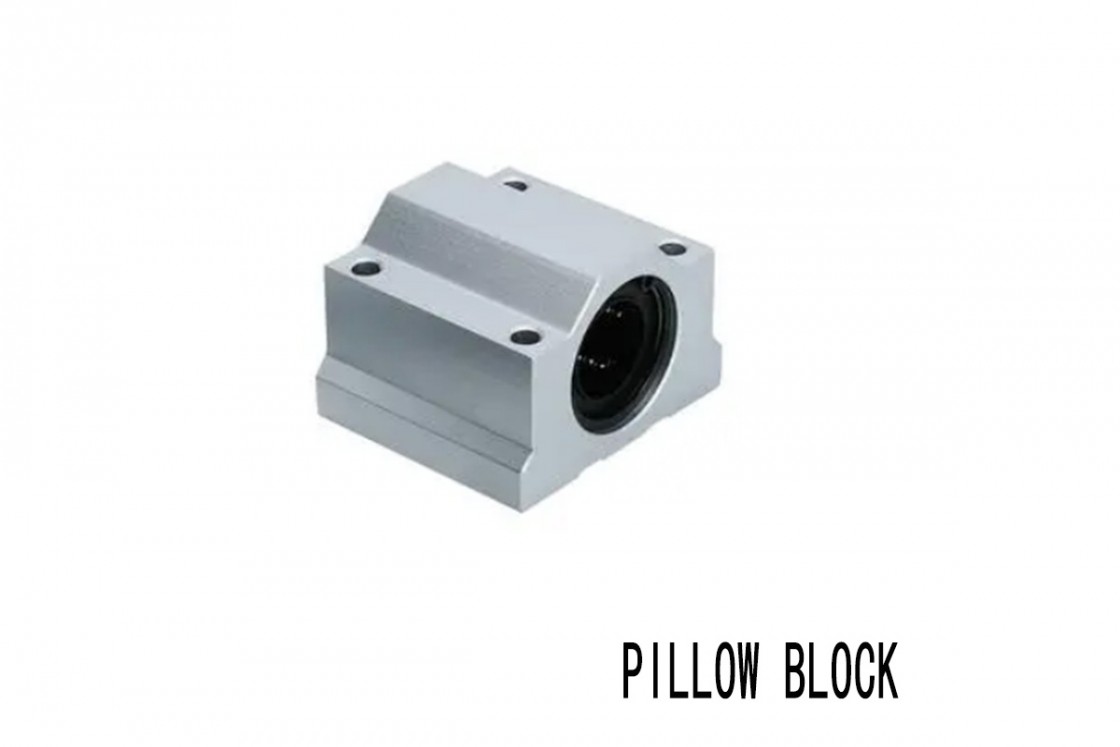
Conclusion
In conclusion, maintaining pillow block bearings is essential for ensuring their longevity and optimal performance in industrial applications. This section summarizes key maintenance practices and emphasizes the importance of proactive care.
Recap of Key Maintenance Practices for Pillow Block Longevity
Pillow block bearings require regular attention to maintain their functionality and extend their lifespan:
|
Maintenance Aspect |
Key Practice |
Recommended Solution |
|
Lubrication |
Regularly lubricate pillow blocks using suitable lubricants to reduce friction and wear. |
Use high-quality lubricants such as synthetic oils or greases recommended by manufacturers. |
|
Inspections |
Conduct routine inspections to identify signs of wear, misalignment, or other issues. |
Implement a checklist for inspections to ensure thorough examination of pillow block components. |
|
Cleaning |
Clean pillow blocks periodically to remove contaminants and prevent corrosion. |
Use mild cleaning agents and soft brushes to avoid damaging bearing surfaces. |
|
Storage and Handling |
Store pillow blocks in clean, dry environments and handle them with care to prevent damage. |
Use protective covers and follow proper handling procedures during transportation and storage. |
Final Thoughts on the Importance of Proactive Care and Maintenance
Proactive care and maintenance play a crucial role in maximizing the lifespan and efficiency of pillow block bearings. By adhering to the recommended practices outlined in this guide, operators can minimize downtime and repair costs while optimizing operational performance.
Regular maintenance not only enhances the reliability of pillow blocks but also ensures safety in industrial operations. It fosters a proactive approach to equipment management, promoting longevity and sustainability in mechanical systems.
Encouragement to Follow the Guide for Optimal Performance and Lifespan of Pillow Blocks
Following this comprehensive care and maintenance guide is crucial for achieving optimal performance and extending the lifespan of pillow block bearings. By incorporating these practices into routine maintenance schedules, businesses can enhance operational efficiency and maintain consistent production output.
By prioritizing pillow block care and maintenance, industries can uphold reliability standards and prolong the service life of essential machinery components. Embracing these best practices fosters a culture of reliability and sustainability in industrial environments.
FAQs: Common Questions About Pillow Block Bearings
Introduction
Pillow block bearings are essential components in many industrial applications, providing support for rotating shafts and ensuring smooth operation of machinery. Proper care and maintenance of these bearings are crucial for their longevity and performance. In this section, we address some of the most frequently asked questions about pillow block bearings, helping you understand their function, maintenance requirements, and troubleshooting tips.
What is a Pillow Block Bearing?
A pillow block bearing, also known as a plummer block, is a mounted bearing used to provide support for a rotating shaft. It consists of a mounting block and a bearing housing, which contains a rolling element such as a ball or roller bearing. Pillow block bearings are designed to handle various loads and can accommodate misalignment between the shaft and the mounting surface.
How Do I Choose the Right Pillow Block Bearing?
Selecting the appropriate pillow block bearing involves considering several factors, including the load capacity, operating environment, shaft size, and speed requirements. It is essential to match the bearing's specifications to the application's needs to ensure optimal performance and longevity. Consulting the manufacturer's catalog and technical support can help you make an informed decision.
What are the Common Causes of Pillow Block Bearing Failure?
Several factors can lead to pillow block bearing failure, including improper installation, inadequate lubrication, contamination, and excessive loads. Ensuring proper alignment during installation, using the correct type and amount of lubricant, and protecting the bearing from contaminants such as dust and moisture can help prevent premature failure.
How Often Should Pillow Block Bearings be Lubricated?
The lubrication interval for pillow block bearings depends on the operating conditions, such as load, speed, and environment. Generally, it is recommended to inspect and lubricate the bearings at regular intervals, typically every three to six months. In high-temperature or high-load applications, more frequent lubrication may be necessary. Always follow the manufacturer's guidelines for lubrication to ensure optimal performance.
What Lubricants are Recommended for Pillow Block Bearings?
The choice of lubricant for pillow block bearings depends on the operating conditions and the type of bearing. Common lubricants include mineral oils, synthetic oils, and greases. High-temperature or high-load applications may require specialty lubricants designed to withstand extreme conditions. It is essential to use the correct type and grade of lubricant as specified by the bearing manufacturer.
How Can I Extend the Life of My Pillow Block Bearings?
To maximize the lifespan of your pillow block bearings, follow these best practices:
Ensure proper installation and alignment to prevent undue stress on the bearing.
Regularly inspect and maintain the bearings, checking for signs of wear, contamination, or misalignment.
Use the appropriate lubricant and maintain a consistent lubrication schedule.
Protect the bearings from environmental contaminants such as dust, moisture, and chemicals.
Monitor operating conditions and loads, and adjust maintenance practices accordingly.
What Should I Do if My Pillow Block Bearing Fails?
If a pillow block bearing fails, it is crucial to identify the root cause to prevent future occurrences. Common steps include:
Inspecting the bearing and housing for signs of damage or wear.
Analyzing the lubrication condition and ensuring the correct type and amount were used.
Checking for contamination or misalignment issues.
Reviewing the operating conditions and load requirements to ensure they match the bearing's specifications.
Consulting with the bearing manufacturer for expert advice and replacement recommendations.
In conclusion, understanding the common questions about pillow block bearings and following best practices for their care and maintenance can significantly extend their lifespan and ensure the smooth operation of your machinery. Regular inspection, proper lubrication, and addressing any issues promptly will help you achieve the best performance from your pillow block bearings.
Garcia, R., & Patel, S. (2022). Material Science and Durability of Pillow Block Bearings.
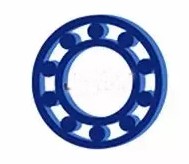

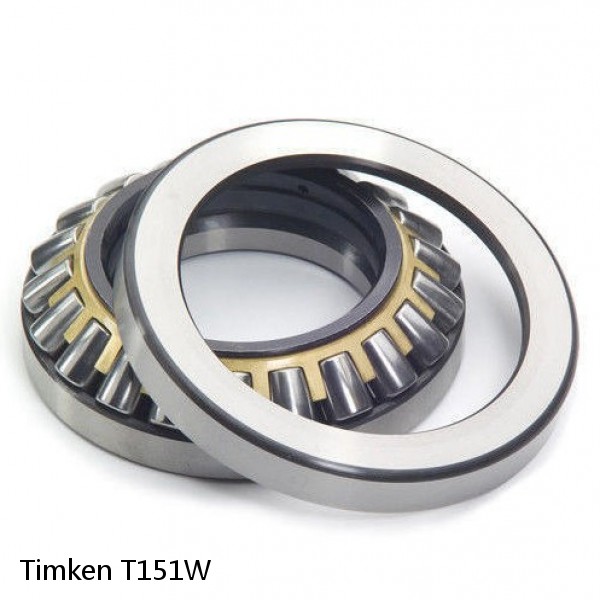 T151W Timken Thrust Roller Bearings
T151W Timken Thrust Roller Bearings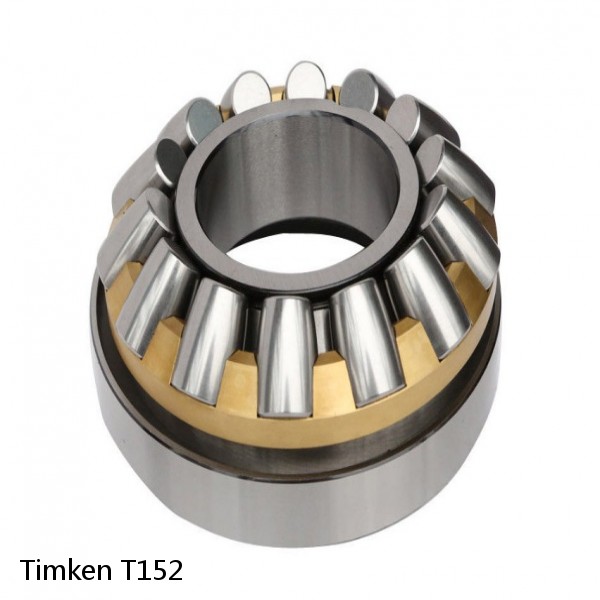 T152 Timken Thrust Roller Bearings
T152 Timken Thrust Roller Bearings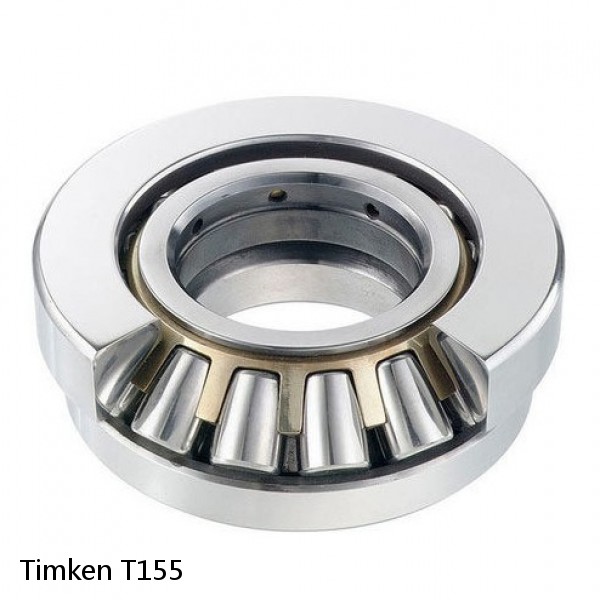 T155 Timken Thrust Roller Bearings
T155 Timken Thrust Roller Bearings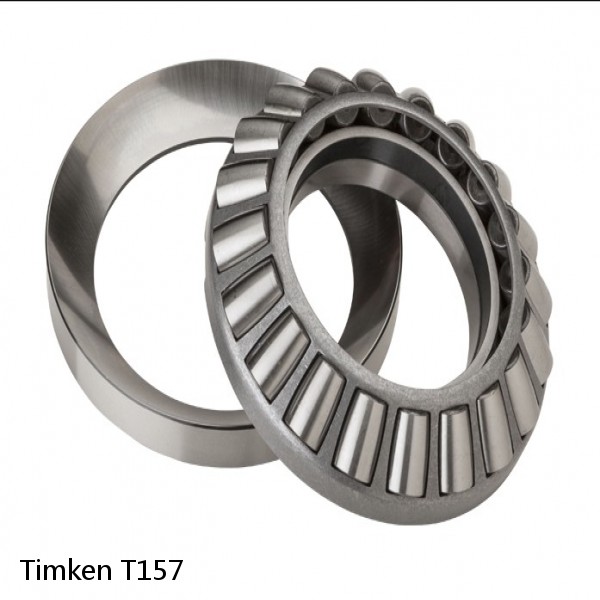 T157 Timken Thrust Roller Bearings
T157 Timken Thrust Roller Bearings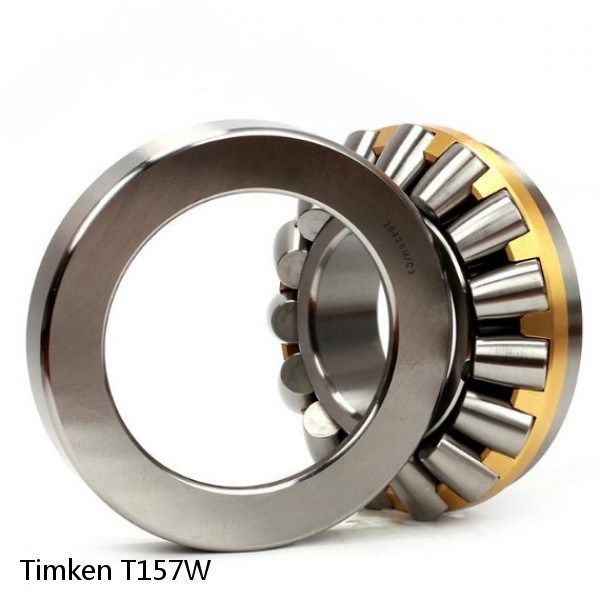 T157W Timken Thrust Roller Bearings
T157W Timken Thrust Roller Bearings